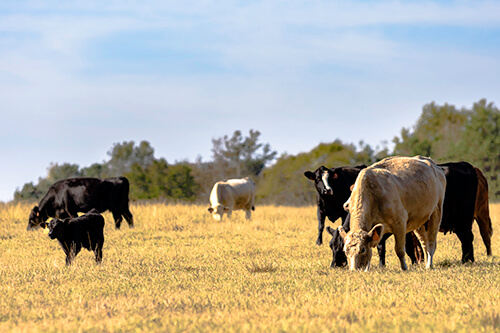Drought Management Strategies for Beef Producers
Sep 30, 2019

Recent dry weather has caused some Southeastern beef cattle producers to consider selling off part or all of their herd. While there is no magical solution that fits all operations, the Co-op Animal Nutrition Division offers the following prioritized strategies:
- Assess your situation – Calculate your forage inventory and compare against your expected needs between now and next spring’s grass. Now is the time to know if you will come up short.
- Explore available options – Can you rent pasture or hay ground nearby? Is hay available for purchase? Could you graze or roll crop residue?
- Optimize available nutrients – Use temporary fencing and rotational grazing to make the best use of the pastures you do have. Provide a quality vitamin/mineral supplement to improve forage digestibility, along with an ionophore to enhance feed efficiency. Deworm and control external parasites to reduce nutrient loss and stress.
- Reduce nutrient requirement – Early weaning calves at 250 lbs (or 100 days old) lessens the amount of feed needed by the cow and allows you to take advantage of the young calf’s superior feed efficiency. Creep feeding is another option for reducing the nutrient demands of the nursing cow.
- Now what? – If you have done all of the above and it still doesn’t look feasible, now is the time to consider culling, but do so in a logical order based on economics:
- Old cows, 10 years and older
- Open replacements
- Unsound cows (bad udder, legs, or feet)
- Open cows of any age
- Feed hay now – Minimize waste by storing under a shed or tarp, and feeding in round bale feeders. Limiting access to hay to 4 to 8 hours per day is another method of stretching available hay supplies and improving utilization.
- Supplement with feed – Low-quality forages, especially crop residues, likely require supplemental energy and protein to maintain the cow herd. Hand-feeding low-starch feeds that have a high nutrient density offers the best value.
- Substitute feed for forage - If forage is extremely limited it can be replaced by high fiber, lower protein and energy feeds at higher feeding rates. Always provide a minimum of 0.25% body weight as hay.